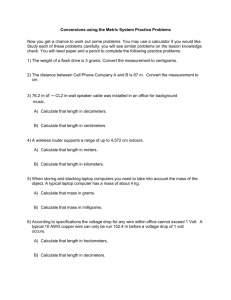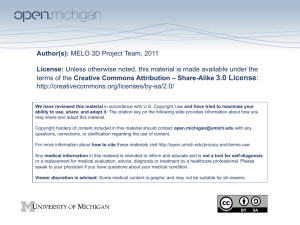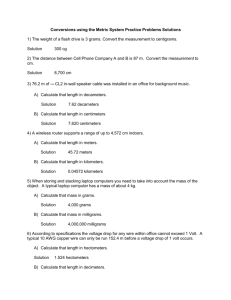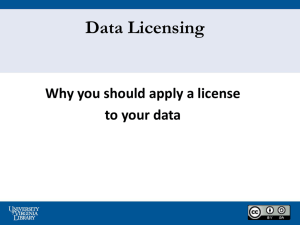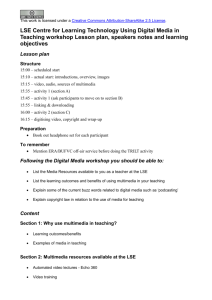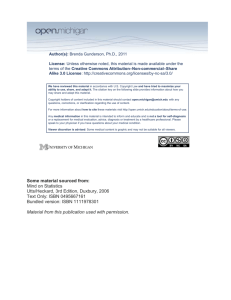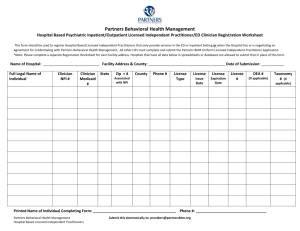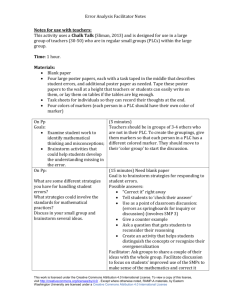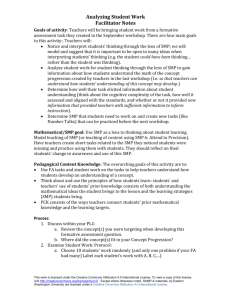CoherenceAmongTasks(Tasks) - Eastern Washington University
advertisement
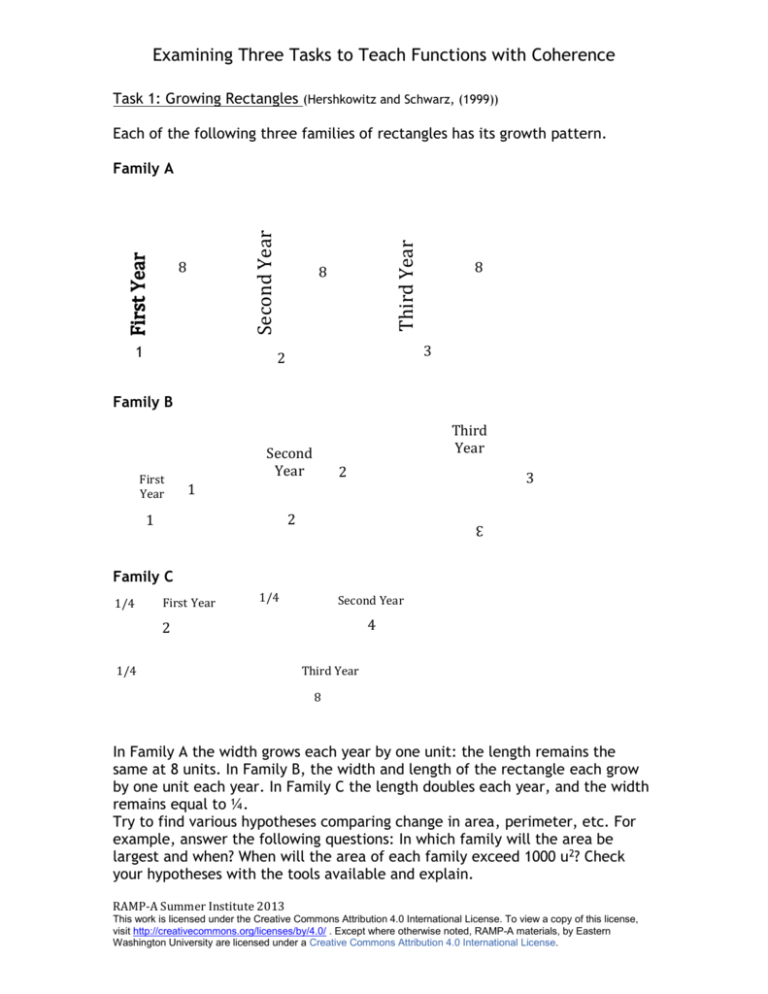
Examining Three Tasks to Teach Functions with Coherence Task 1: Growing Rectangles (Hershkowitz and Schwarz, (1999)) Each of the following three families of rectangles has its growth pattern. 8 1 Third Year Second Year Family A 8 8 3 2 Family B First Year Third Year Second Year 2 1 3 2 3 1 Family C 1/4 First Year 1/4 Second Year 4 2 1/4 Third Year 8 In Family A the width grows each year by one unit: the length remains the same at 8 units. In Family B, the width and length of the rectangle each grow by one unit each year. In Family C the length doubles each year, and the width remains equal to ¼. Try to find various hypotheses comparing change in area, perimeter, etc. For example, answer the following questions: In which family will the area be largest and when? When will the area of each family exceed 1000 u 2? Check your hypotheses with the tools available and explain. RAMP-A Summer Institute 2013 This work is licensed under the Creative Commons Attribution 4.0 International License. To view a copy of this license, visit http://creativecommons.org/licenses/by/4.0/ . Except where otherwise noted, RAMP-A materials, by Eastern Washington University are licensed under a Creative Commons Attribution 4.0 International License. Examining Three Tasks to Teach Functions with Coherence Task 2: Guess my rule 1. Mark and Raymond are playing Guess My Rule. When Mark gives an input of 2, Raymond gives an output of When Mark gives an input of 5, Raymond gives an output of When Mark gives an input of 10, Raymond gives an output of What could be Raymond’s rule? Explain how you thought about it. 2. Amy has this rule: square the input then subtract 1 or add 4 depending on a coin flip (heads subtract 1, tails add 4), what are some inputs and output pairs? Angelica gives an input of 6, what should be the output? James gave Amy an input and she replied with an output of 8. What could have been James’ input? 3.a. Create a rule whose output is 5 when the input is 8. b. Create a different rule whose output is 5 when the input is 8 (try to be creative!). c. Provide a table of at least 5 input values and their corresponding output values for each of your rules above and be ready to trade with another group to have them guess your rules. 4. Guess the rules given to you by the other group. How are the rules different and how are they the same? RAMP-A Summer Institute 2013 This work is licensed under the Creative Commons Attribution 4.0 International License. To view a copy of this license, visit http://creativecommons.org/licenses/by/4.0/ . Except where otherwise noted, RAMP-A materials, by Eastern Washington University are licensed under a Creative Commons Attribution 4.0 International License. Examining Three Tasks to Teach Functions with Coherence Task 3: The Customer (Illustrative Mathematics Project) A certain business keeps a database of information about its customers. 1. Let C be the rule which assigns to each customer shown in the table his or her home phone number. Is C a function? Explain your reasoning. Customer Name Home Phone Number Heather Garcia 3105100091 Mike London 3105200256 Sue Green 3234132598 Alex Timofeyev 3234132598 Michelle Metz 2138061124 2. Let P be the rule which assigns to each phone number in the table above, the customer name(s) associated with it. Is P a function? Explain your reasoning. 3. Explain why a business would want to use a person's social security number as a way to identify a particular customer instead of their phone number. RAMP-A Summer Institute 2013 This work is licensed under the Creative Commons Attribution 4.0 International License. To view a copy of this license, visit http://creativecommons.org/licenses/by/4.0/ . Except where otherwise noted, RAMP-A materials, by Eastern Washington University are licensed under a Creative Commons Attribution 4.0 International License.


